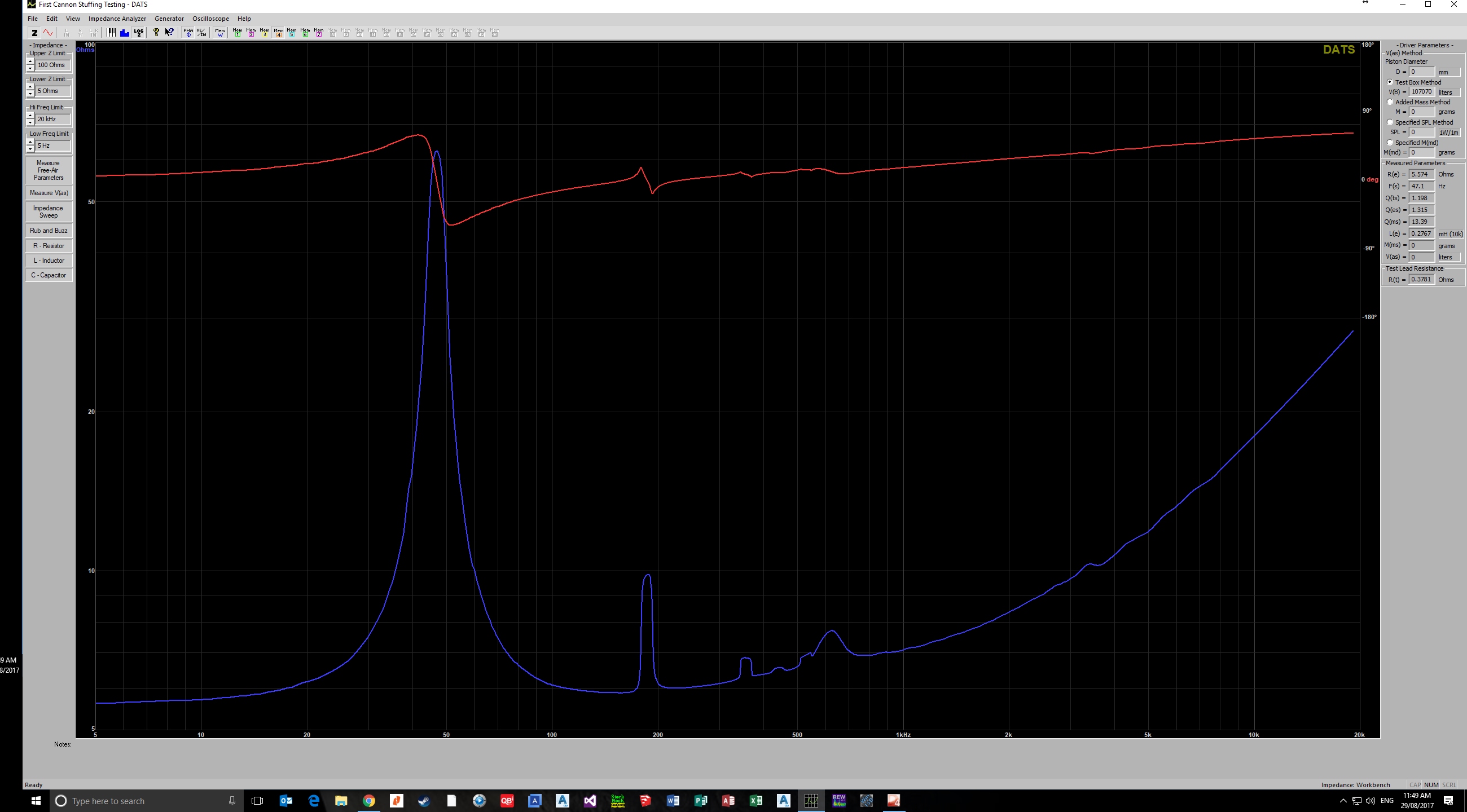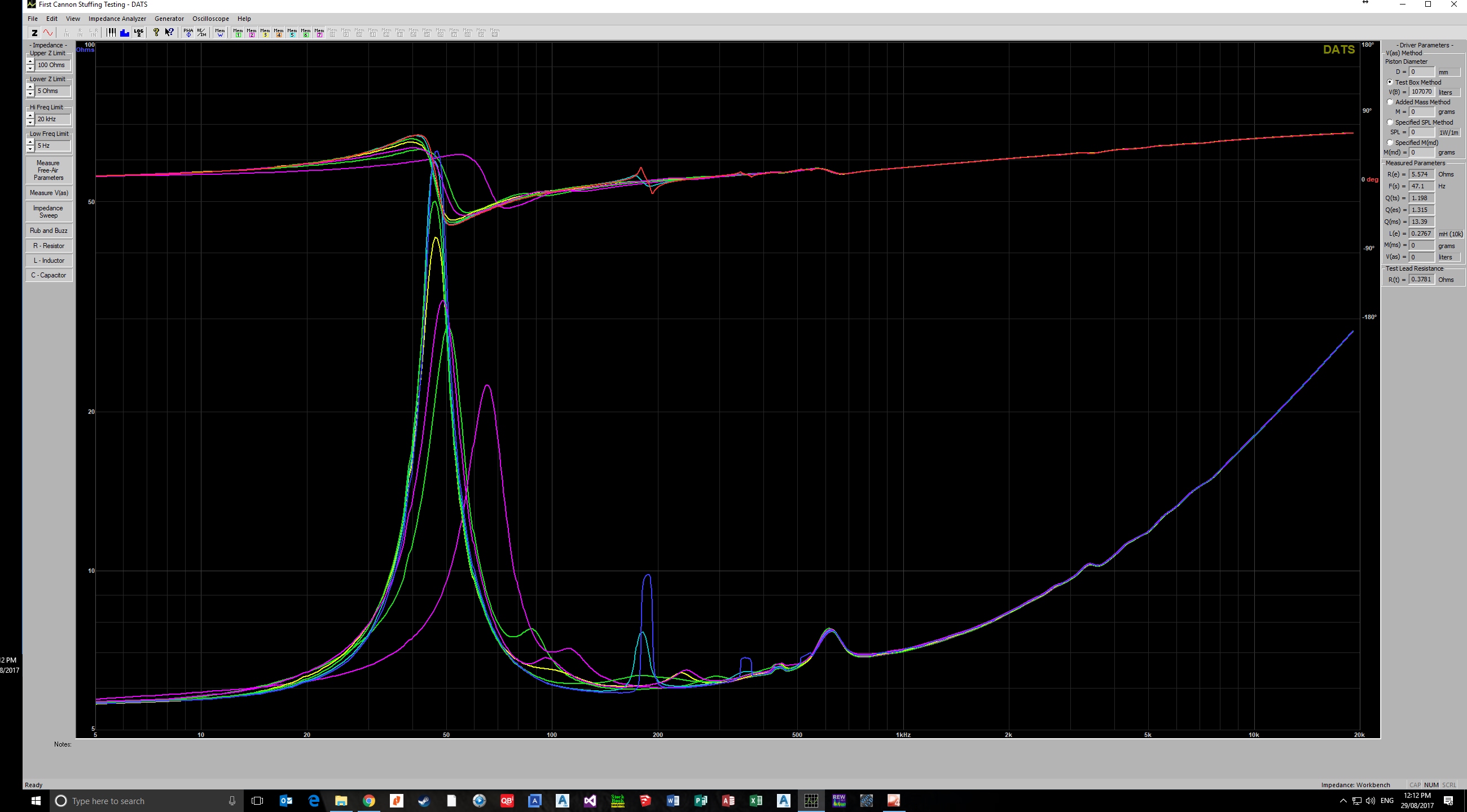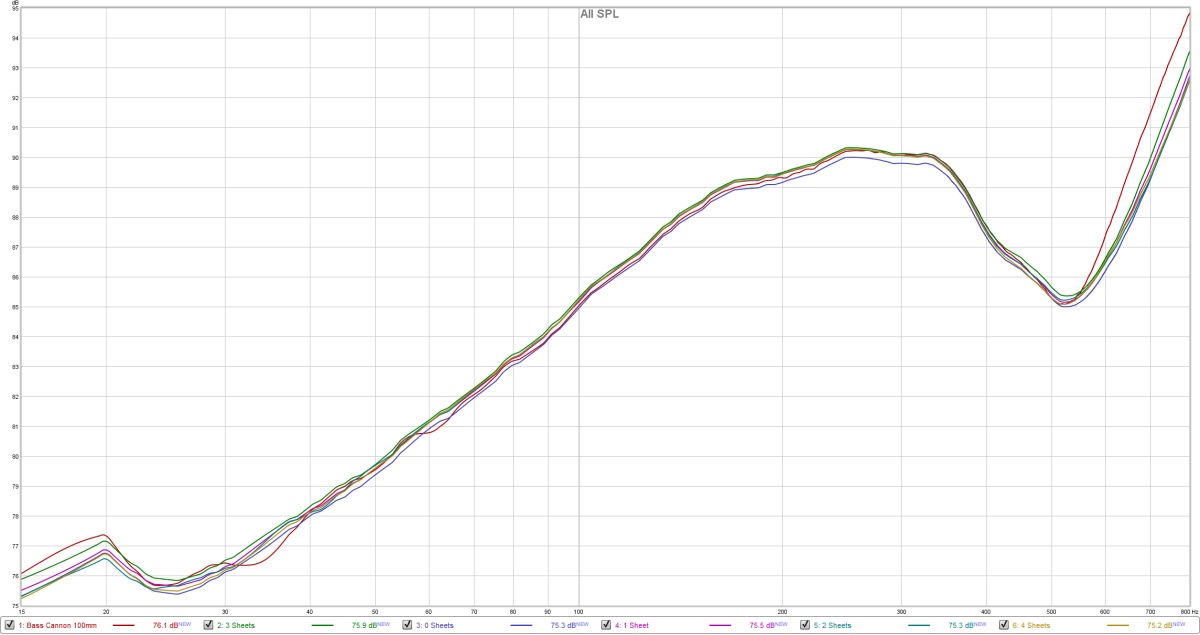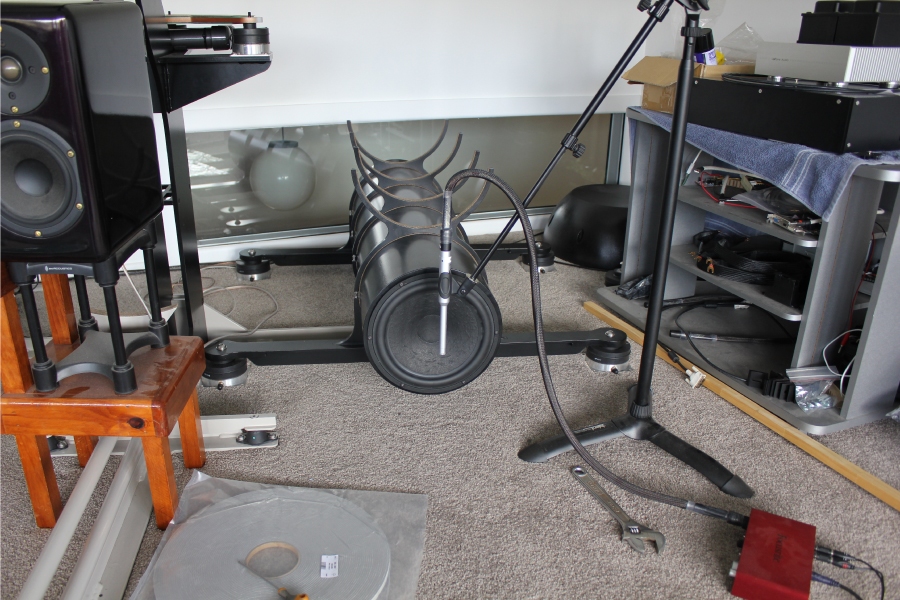Rerurn to Romy the Cat's Site
In the Forum: Horn-Loaded Speakers
In the Thread: Deep End DIY - Australian take one Macondo.
Post Subject: Testing of the first Bass CannonPosted by anthony on: 8/28/2017
So, I have finally started testing a single Bass Cannon in my room.
First, I had to get the rigidity as high as possible and then damp the steel ringing as much as feasible. I used butyl rubber/aluminium automotive deadener on the inside of the tube which really worked well and then on the 10mm thick backplate and frontplate (that the driver screws into) I used the same vicoelastic polymer and 2mm aluminium CLD arrangement that I have been using to great success in the DSET power supplies and amplifiers. I did some hard knuckle rap tests and measured on my phone the amount of time to stop ringing and I have got it down to about the same as a double brick wall. There is a local speaker manufacturer that makes my standmounts that puts a lot of effort into low energy storage cabinets and my steel Cannon tubes are damped quicker than those and at a lower frequency. So rigidity and damping is good for these Cannons...I am very happy.
So I screwed in a driver and was concerned by the sound scratching and tapping the woofer made...it was horrible and there was obviously some energy storage or something similar happening. I listened to the radio and female voices sounded particularly horrible (yes I know they are being reproduced by a 10" woofer) although the effect was a little more veiled by music. I figured that a feedback loop was happening between the driver and the flat backplate of the cannon which contributed to the impression of energy storage and ridiculously long decays after the music stopped. So I cut some leftover fibreglass insulation into the circles matching the inside diameter of the Cannons and stuffed it in...instantly better...good in fact...and I was greatly relieved.
So next item was to do some impedance testing with various amount of fibreglass sheets in the Cannon. First up with no stuffing:

Look at that, the ringing is clearly visible at about 180Hz along with harmonics! So I added one sheet at a time so that I could identify when the ringing was damped and the effect on Fs and the peak of resonant impedance. Without boring you with every test, the backplate ringing was damped out with a couple of sheets of fibreglass and another couple further lowered the resonant impedance while adding the fifth started to increase the resonant frequency. At this stage I think that 4 sheets looks about ideal because it gets the maximum reduction in resonant impedance whilst barely raising the resonant frequency. Below is a graph of all 0/1/2/3/4/5/10 sheets of fibreglass stuffing in a single Cannon:


Using a low output impedance SS amp meant that the frequency response was barely affected by the various amounts of stuffing:

It all looks as expected from an SPL point of view. If I parallel 8 Cannons with 4 sheets of fibreglass stuffing the DSET Bass OPT will see a range of 0.8R - 4R, which is pretty good I think considering it is wound to drive 1R and I am yet to add resistance for speaker cable of which there will be a lot for this channel. The Cannons are tuned to 47Hz which is higher than I had wished, but adding stuffing has done nothing to reduce Fs but adding more and more does eventually raise it. I don't know if different stuffing materials would be able to help lower Fs, but it looks like I am stuck at 47Hz
For what it is worth I will do some testing with a fullrange Melquiades with the Bass OPT installed to see how a higher output impedance affects the SPL graph.
Below is a single Cannon ready for SPL testing in-room. I've not been too OCD about setting up to remove the room from the measuring equation, relying on a short gating to get some idea of what the speaker is capable of.

Rerurn to Romy the Cat's Site